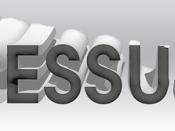Abstract The current experiment investigates the effects of different types of social pressure on academic performance of entering freshmen. Ninety undergraduate students (45 males and 45 females) were randomly assigned to three equal groups. Students of the first group experienced positive social pressure and their first semester GPA's were used as a dependent variable. Those in the second group experienced negative social pressure. Meanwhile, students in a third control group experienced no social pressure at all. Using a one way ANOVA of the independent variable, the experimenters found a significant difference in the GPA's of the students. A Tukey's post hoc analysis showed that the significance of the effect was found between the positive and control groups as well as the positive and negative groups.
The Role of Social Pressure on Academic Performance of Entering Freshmen According to Rosabeth Kanter (1977), the more isolated the minority group members are among majority persons, the less likely they are to be successful academically.
However, the higher the proportion of minority members in a group, the more likely they are to be successful. She also suggested that the presence of female students in a male dominated law school tend to affect their achievements. She also claimed that minority students are perceived as "tokens" or symbols and not as individuals. There are three main characteristics of a "token student" that can be explained as forms of social pressure. First, they are highly visible, thus they face performance demands that can be met by over achieving. As a result, they face performance pressure and they tend to perform differently than other dominant individuals. Second: token individuals tend to polarize and this polarization leads to further isolation. Third: token individuals suffer from role entrapment. They are stereotyped and expected to behave according to these stereotyping. Using...


